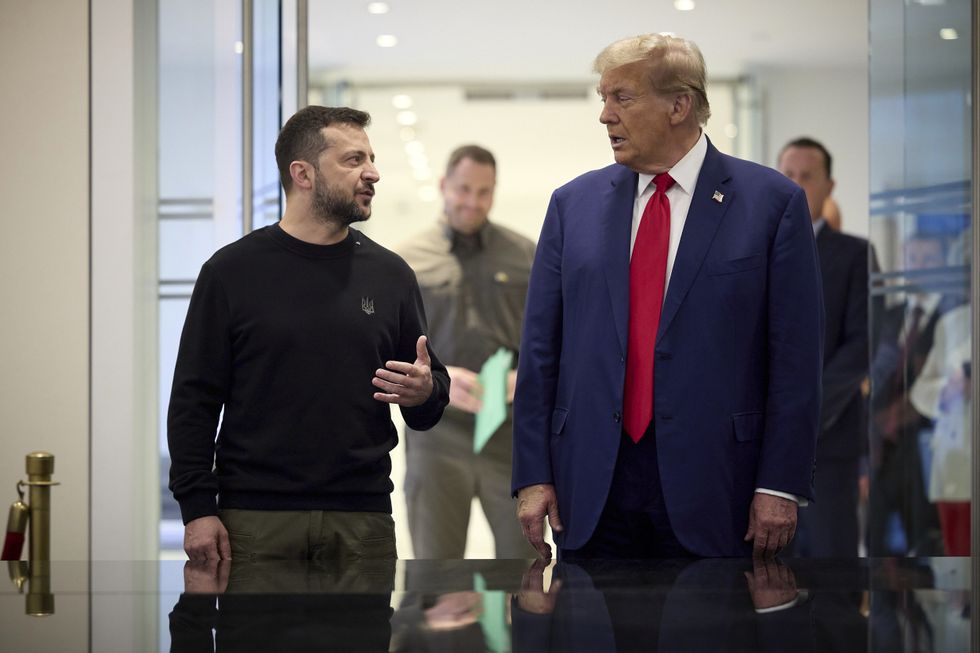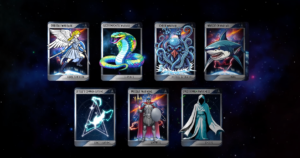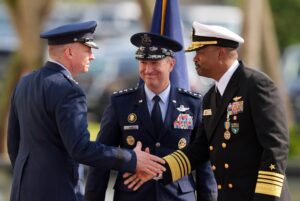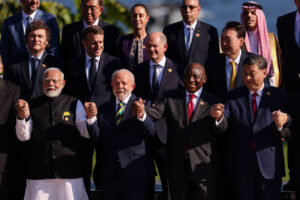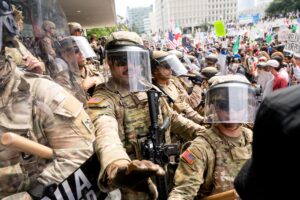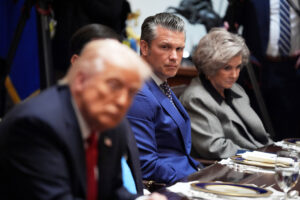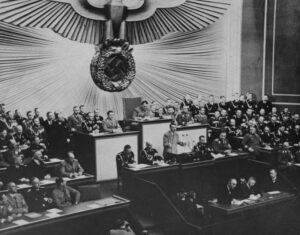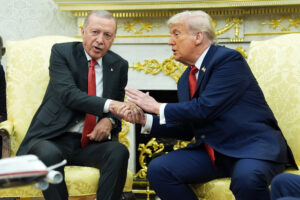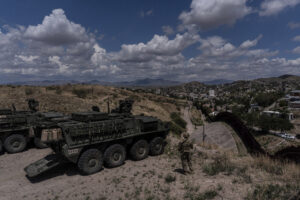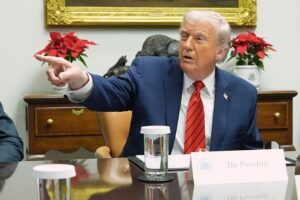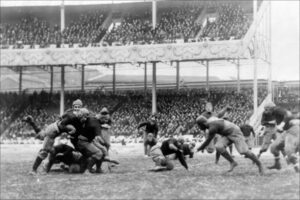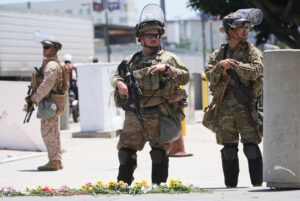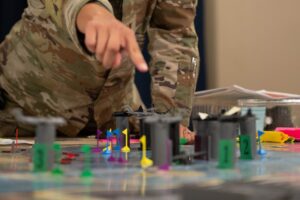
-Analysis-
As a candidate, Donald Trump promised to end the war in Ukraine within his first 24 hours as president of the United States. Of course, he has missed that deadline. Even so, negotiations to end the three-year conflict are expected to accelerate. And experts are weighing in.
During negotiations, Russia is expected to present the following demands: retention of control over occupied territories; Ukraine’s rejection of NATO membership; a neutral status for Ukraine; restrictions on Ukraine’s military capabilities.
For the latest news & views from every corner of the world, Worldcrunch Today is the only truly international newsletter. Sign up here.
Bloomberg reported on Jan. 15 that Russia is also ready for territorial exchanges — potentially referring to parts of the Kursk region currently under Ukrainian Armed Forces control. Officially, Russia demands a neutral, non-aligned and non-nuclear status for Ukraine, as well as the lifting of Western sanctions.
Russian President Vladimir Putin’s stance on territorial issues remains somewhat unclear. In June, he stated that the withdrawal of Ukrainian troops from the Donetsk, Luhansk, Zaporizhzhia, and Kherson regions within their administrative borders was a condition for starting negotiations. At the same time, Putin often claims he is ready to negotiate based on the “realities on the ground,” as he reiterated during the December “Direct Line” broadcast.
Russian political analyst Ivan Preobrazhensky said that there is a fairly large group of people in Putin’s inner circle trying to convince him that Russia needs at least a ceasefire. These are primarily those involved in economic matters. Yet Preobrazhensky said he is “convinced that Putin is not ready for any serious negotiations to end the war on any terms, even those favorable to him.”
Yet Ukrainian political analyst Alexey Golobutsky, is skeptical that Putin would accept a deal even on favorable terms that allows Ukraine to remain an independent state aligned with Western nations rather than within Russia’s sphere of influence. “For Putin, Ukraine is a ticket to the league where the Soviet Union once stood. He needs to demonstrate that Ukraine is within Russia’s sphere of influence,” Golobutsky said.
For her part, Emily Harding, a fellow at the Center for Strategic and International Studies, believes negotiations will be slowed by the fact that “Putin still believes he can win on the battlefield.”
“As long as Putin thinks that military actions work to his advantage, he has little incentive to make a deal. He will believe time is on his side,” she said.
What Zelensky wants
On the Ukrainian side, President Volodymyr Zelensky has long insisted on restoring Ukraine’s 1991 borders. Yet the “victory plan” he presented in October 2024 that said nothing specific about reclaiming the occupied territories. Since November, Zelensky has been saying that the occupied territories could be returned diplomatically after a ceasefire.
“De facto, these territories are now controlled by the Russians. We don’t have the strength to take them back. We can only rely on diplomatic pressure from the global community to force Putin to the negotiating table,” Zelensky said in December.
In exchange, Ukraine wants security guarantees to protect against a future Russian invasion. Zelensky continues to insist on NATO membership. “If not today, then we need to know when. And will there be an invitation to NATO? These are concrete things. Even knowing you have an invitation, or specific dates, is a strong position in negotiations with Russia,” he said on Jan. 16.
Ukrainian political analyst Oleksii Holobutsky observed that “starting negotiations by demanding that the Russians withdraw to the 1991 borders is unrealistic — even the Feb. 24 [2022] borders are unrealistic.” Yet some form of exchange is possible, such as swapping the part of Kursk Oblast occupied by the Ukrainian Armed Forces for the Zaporizhzhia Nuclear Power Plant.
Leaving Ukraine in limbo would be political suicide for Zelensky.
“Ukrainian society is ready for such an option. Of course, there are people that would see this as betrayal, but the majority is ready,” Holobutsky said, noting that “unlike Putin, Zelensky has to think about the elections that will follow the signing of a peace agreement. Such a compromise won’t boost his popularity; in any case, he will be the president under whom Ukraine lost territory.”
Holobutsky expects Zelensky will therefore hold firm on other issues, such as NATO membership or the size of the armed forces. A failure to secure NATO membership will be difficult — but possible — to sell to the public. Yet any agreement to reduce the size of the armed forces would undoubtedly be seen as capitulation. If a country — one that hasn’t won but also hasn’t lost a war — agrees to reduce the size of its military, it looks more like surrender than a peace settlement.
“I believe that on this issue, even the Americans won’t be able to sway public opinion or Zelensky,” Holobutsky said.
For Orysia Lutsevych, an analyst at the London-based think tank Chatham House, “leaving Ukraine in limbo — without a defense treaty or effective security agreement — would be political suicide for Zelensky.” She expects he would face strong protests from Ukrainian society, given the immense price the country has paid in this war.
Zelensky understands the dangers of an unsecured ceasefire, Lutsevych said. He has stated that only the United States can provide Kyiv with effective security guarantees that would end the war. So the U.S., Europe and Ukraine must agree on these guarantees before any direct talks with Putin.

Trump’s timelines
Trump’s team has acknowledged that the 24 hour deadline was not possible. Two insiders, who have discussed the plan with Trump, say the timeline has now shifted to several months. And special envoy for Ukraine Keith Kellogg believes the sides could reach an agreement within 100 days.
Trump’s national security adviser, Mark Waltz, said the president understands that it will not be possible to drive Russian forces out of all the territories they’ve occupied. One of the first plans presented to Trump for ending the war involved freezing combat operations along the current front line. Trump opposes Ukraine’s NATO membership, admitting that he understands Russia’s concerns about Kyiv potentially joining the alliance.
To push the parties toward a peace agreement on these terms, Trump would threaten Russia with a sharp increase in arms supplies to the AFU (Armed Forces of Ukraine) while threatening Ukraine with a sharp reduction. Another Russia strategy includes offering to ease oil sanctions or threatening to tighten them further.
Alexandra Filippenko, a Russian political scientist who authors a Telegram channel on US elections, said that Trump considers the unpredictability of his negotiation style to be his greatest advantage.
With Biden or Harris it was a nightmare without end, but with Trump it will be a nightmare ending.
“He believes that the element of surprise is his key strength, which is why he avoids revealing his plans,” she said. “One thing is clear: Trump wants the war to be over as soon as possible. He wants things to get settled in Europe so that Europe can handle its own affairs while he focuses on what he sees as more important issues, such as the Asia -Pacific region and the American continent.”
Filippenko noted that in the past, Trump has often approached negotiations without a detailed plan, relying instead on “his charisma and persuasive power to achieve his goals… He experiments with different pressure tactics to see how they play out.”
Russian analyst Preobrazhensky also believes that Trump doesn’t have a plan. “It seems that he is just now beginning to grasp the complexity of the issue, maybe after meetings with Zelensky or after finally receiving full intelligence briefings. Perhaps someone competent has finally managed to get through to him,” Preobrazhensky said.
Even so, Golobutsky said that “with Biden or Harris it was a nightmare without ending, but with Trump it will be a nightmare ending.” According to the Ukrainian analyst, Biden’s approach was to gradually weaken Russia during the war to the point where it wouldn’t just fail to conquer Ukraine but wouldn’t have the strength for anything at all.
Trump’s concept is different; he might take tactical steps, like initiating a ceasefire without any guarantees, or simply telling both sides to stop shooting at each other, Golobutsky said. This could serve as a mere pause before another Russian offensive — or it could stretch on for decades.

